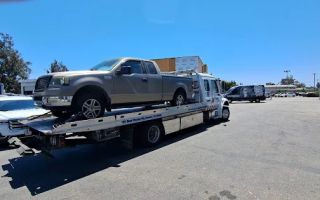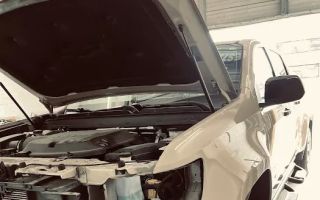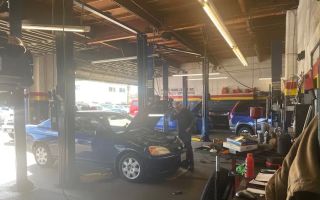It’s one of those situations that can catch you off guard: you’re starting your car, and the engine barely turns over. It’s happened before—maybe you’ve even had to jumpstart it a few times over the past few months. You might start to wonder: how many jumpstarts is too many? When should I really think about replacing my car battery?
From my own experience, knowing when to replace a battery isn’t always as straightforward as we’d like it to be. Sure, we all know that batteries eventually die, but after a couple of jumpstarts, the question of whether it's time to replace the battery becomes a bit murky. Let me walk you through the critical signs that tell you when it’s time to say goodbye to your old battery, and I’ll also explain what multiple jumpstarts can actually do to your car battery over time.
1. The Impact of Multiple Jumpstarts on Your Car Battery
To start, let me explain why repeatedly jumpstarting your car can be harmful. Every time you jumpstart your vehicle, you’re asking the battery to work harder than it was intended to. A jumpstart is essentially an attempt to revive a weak or dead battery, and while it works in the short term, this repeated strain can wear the battery down faster than normal. Imagine your battery as a reservoir of energy; each time it’s depleted during a jumpstart, it doesn't fully recover to its original capacity. This puts more strain on the alternator and can cause long-term damage to the battery.
Now, you might think that you’re just getting by with a jumpstart or two, but over time, this process slowly reduces the battery’s lifespan. If you’ve had to jumpstart your car more than once or twice recently, it could be a sign that your battery is no longer holding a charge as efficiently as it should. If you’re driving around hoping the next jumpstart will work, you’re probably not doing your battery any favors.
2. Signs Your Car Battery Needs Replacing
As someone who has had my fair share of car troubles, I’ve learned to recognize the symptoms that indicate it’s time to replace the battery. Here are a few clear signs to watch out for:
- Slow Engine Crank: If you notice that your engine is cranking slower than usual when you try to start your car, this could be a sign that the battery is losing its charge. Over time, the battery’s ability to provide enough power to turn the engine over diminishes. If this happens regularly, it’s probably time to replace the battery.
- Electrical Issues: Dimming headlights or flickering interior lights can indicate that the battery is struggling to provide sufficient power to the car’s electrical system. If your car's lights seem weaker than usual, it’s a warning that the battery’s charge is unstable.
- Swollen Battery: This might be one of the more surprising signs I learned about. If your battery looks swollen or bloated, that’s a definite red flag. Excessive heat, overcharging, or poor ventilation can cause a battery to swell. This could lead to leaks and potential hazards.
- Age of the Battery: The typical lifespan of a car battery is around 3 to 5 years. Even if you haven’t experienced any noticeable symptoms, the battery might be reaching the end of its natural life. If your battery is approaching or past that age and you’ve been jumpstarting it, it's time to replace it before you get stuck.
3. Other Potential Causes of Battery Issues
Sometimes, the issue with your battery might not be entirely the battery’s fault. While frequent jumpstarts are a major contributor, there are a few other factors that can cause a battery to drain or fail prematurely:
- Faulty Alternator: If your alternator isn’t charging the battery correctly, it could lead to frequent battery problems. The alternator is responsible for keeping the battery charged while the engine is running. If it’s malfunctioning, the battery won’t get the charge it needs, which means you’ll likely experience frequent jumpstarts and eventual failure.
- Corroded Battery Terminals: Corrosion on the battery terminals can prevent the battery from properly connecting to the car's electrical system. This can lead to trouble starting the car and reduced power, which may give the false impression that the battery is the issue.
- Extreme Temperatures: Extreme cold or heat can also affect your battery’s ability to hold a charge. If you live in an area with harsh winters or sweltering summers, your battery could be under additional stress, leading to a shorter lifespan.
4. The Consequences of Not Replacing Your Battery
If you’re constantly jumpstarting your car and ignoring the signs of a failing battery, you might find yourself stranded at the most inconvenient times. Waiting too long to replace your battery can cause further damage to your car’s electrical system, and in some cases, it can even cause permanent damage to the alternator or other components. I once learned this lesson the hard way, when my repeated jumpstarts caused my alternator to fail, leading to costly repairs. Trust me, replacing a battery before it completely dies will save you both time and money in the long run.
5. How to Test Your Car Battery
If you’re unsure whether your battery is on its way out, there are several ways to test it. Many auto parts stores will test your car battery for free, or you can purchase a battery tester for use at home. These devices can measure the voltage and give you a good idea of the battery’s health. If the voltage is consistently below 12.4 volts, the battery is likely on the decline. If it’s under 11.8 volts, it’s probably time to replace the battery.
Another simple test is to check the headlights. With the car turned off, turn on the headlights and look at how bright they are. If they’re dim, it may indicate that the battery is not holding a charge. If the headlights brighten when you start the car, this may suggest the alternator is functioning but the battery itself is weak.
6. Choosing the Right Replacement Battery
Once you’ve decided it’s time to replace the battery, it’s important to choose the right one for your car. Car batteries come in different sizes and types, so it’s best to refer to your car’s owner manual or consult an expert. The most important factor to consider is the cold-cranking amps (CCA) rating, which measures how well the battery performs in cold temperatures. A higher CCA rating ensures that your car will start reliably even in cold weather conditions.
Don't forget to ask about the warranty on the new battery. Many batteries come with a limited warranty that can provide peace of mind, in case it fails earlier than expected.
In my experience, replacing the battery at the right time is critical for keeping your car running smoothly. I know it can be tempting to put off the replacement, especially if the jumpstarts seem to work fine. But when you take the time to recognize the signs and address the issue proactively, you’ll avoid the stress and inconvenience of a breakdown and ensure your car’s electrical system remains in good working order.


























